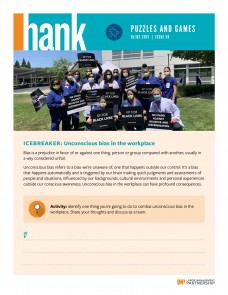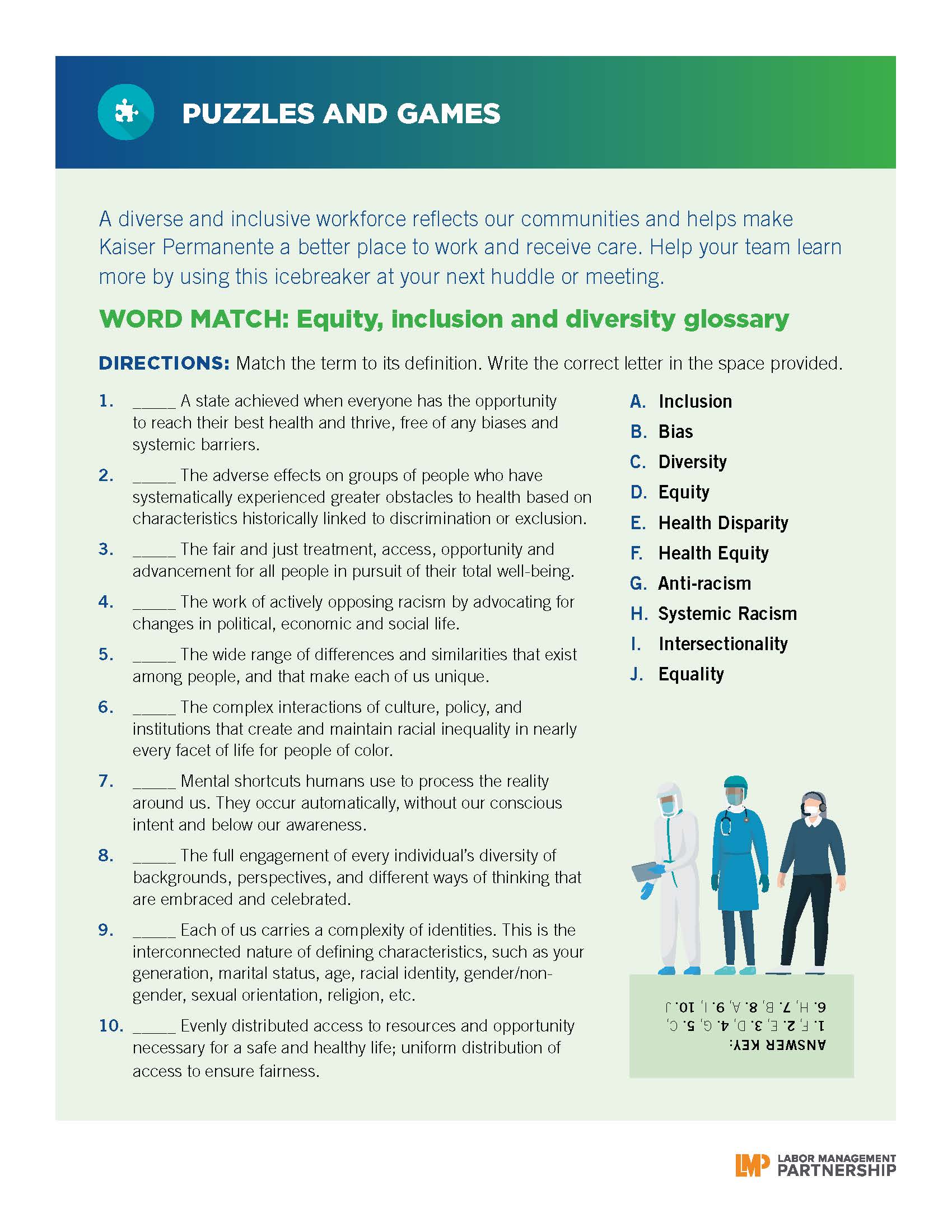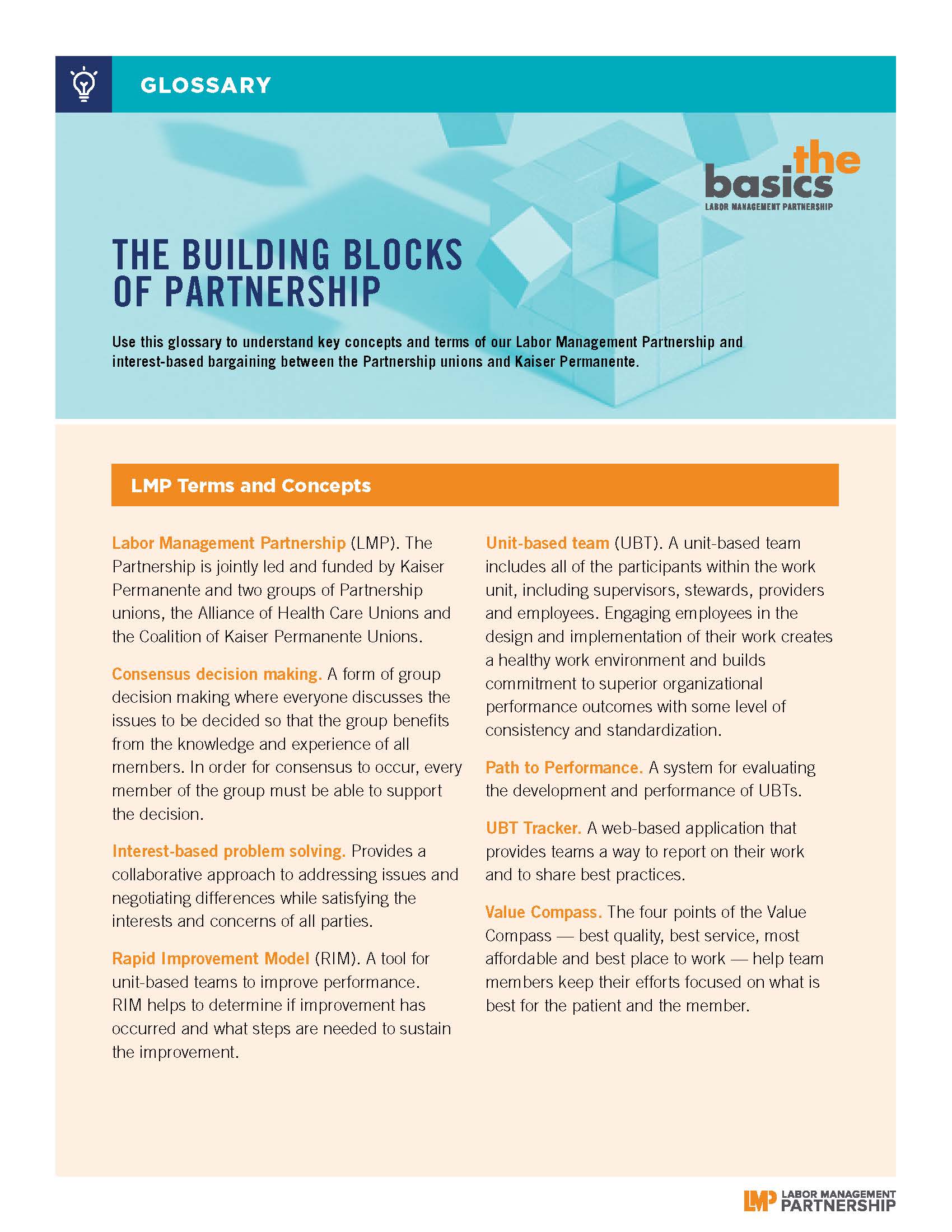What does it mean to work in partnership?
It’s a joint commitment to collaborate, enshrined in the Labor Management Partnership’s national agreements.
It’s employees, managers, physicians and dentists building on common interests to make decisions and solve problems.
It’s Kaiser Permanente and the Partnership unions finding creative, mutually beneficial solutions that result in improved care, service and affordability.
There's never been a better time than right now to shine a fresh spotlight on the basics — the team-tested tools and practices fundamental to a strong partnership, such as the Rapid Improvement Model, consensus decision making and interest-based problem solving.
Whether you’re new to partnership or well-versed in its ways, use these performance improvement tools to identify issues, test changes, solve problems, make decisions, deliver better care and service, and enhance your work life.
LMP tools are designed to help you work together when things are going well — and bridge differences when the going gets tough. This approach addresses the needs of union members and helps the organization improve performance — which ultimately benefits Kaiser Permanente’s patients, members and communities.






